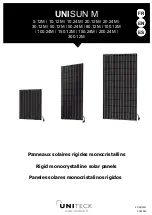
GREER COMPANY
GREER COMPANY
GREER COMPANY
GREER COMPANY
Crane Systems
GREER COMPANY
1918 EAST GLENWOOD PLACE, SANTA ANA, CA 92705
PN W450250 Rev B 08/09/00
RCI 510 RATED CAPACITY INDICATOR OPERATOR'S MANUAL
TEL:(714) 259-9702 FAX:(714) 259-7626
34 of 35
OUTRIGGER (ORs)
A support projecting from a main structure used to provide additional
stability.
OVERLOAD
The point at which the actual load exceeds the rated capacity of the crane.
PARTS OF LINE
The number of parts of hoist rope between the upper and lower blocks.
PICTOGRAPH
A pictorial representation of the crane.
POINT OF LIFT
The location of the hoist rope for the current lift e.g. main boom, auxiliary
head or jib.
PRE-ALARM
The point at which the actual load is 90% of the rated capacity of the crane.
PRESSURE
Hydraulic pressure in the boom hoist cylinder
RADIUS
The horizontal distance from the centerline of rotation to the center of the
hook.
RATED CAPACITY
The lifting capacity of a crane, as determined by the published capacity
chart.
RATED CAPACITY
The load that a crane can safely handle based on factors such as strength,
stability, and rating.
RATING
A factor determined by legislation that limits the proportion of the
capability of the cranes that may be utilized in a lifting operation.
Usually expressed as a percentage of strength or stability.
REEVING
A rope system in which the rope travels around drums and sheaves.
ROPE LIMIT
The maximum permitted single line pull determined by the construction and
diameter of a wire rope.
ROPE LIMIT
A condition that occurs when the type of rope and the parts-of- line in use
restrict the capacity of the crane.
SENSOR
A device that responds to physical stimulus and transmits a resulting
impulse.
SHEAVE
A grooved wheel or pulley.
SLEW OFFSET
The horizontal distance from the boom pivot to the center of rotation
STOWED ATTACHMENT
An attachment usually stowed on the main boom when not in use.
UPPERSTRUCTURE
The structural part of a crane above the carrier, usually rotating.


































